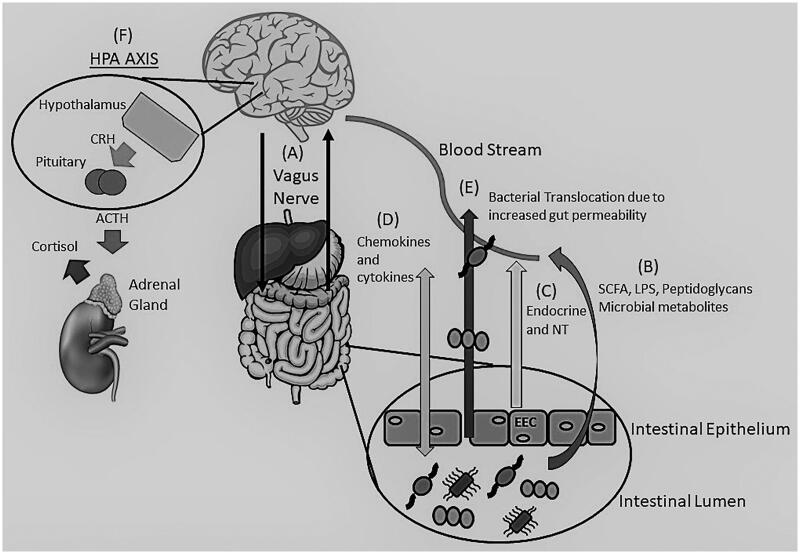Figure 1.
The Brain-Gut-Microbiome Axis. Depiction of the bidirectional (two-way) communication between the brain and gut through the vagus nerve (A) and the immune system. Communication is achieved through various mechanisms including microbial by-products, such as SCFA, LPS and peptidoglycans (B), release of neurotransmitters (GABA, Norepinephrine, Serotonin, Acetylcholine, and others) and endocrine messengers via the enteroendocrine cells (C) as well as chemokine and cytokine release that can lead to neuroinflammation (D). Stress can influence the microbiota causing dysbiosis leading to an alteration of the immune system, SCFA and tryptophan levels, increasing gut permeability (“Leaky gut) (E) and activation of the HPA axis (F). Adrenocorticotropic hormone (ACTH), Cortisol Releasing Hormone (CRH), Enteroendocrine cells (EEC), y-aminobutyric acid (GABA), Lipopolysaccharides (LPS), Neurotransmitters (NT), Short Chain Fatty Acids (SCFA).

